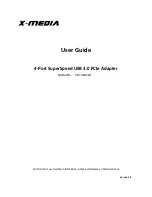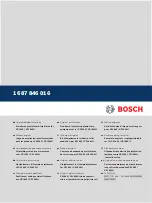
host bus adapter for Windows and Linux installation guide
3–5
Installing the SCSI Miniport Driver
7. Enter the following command to verify that the RPM installation was successful:
# rpm -a -q | grep lpfc
8. Enter the following command to remove the RPM type:
# rpm -e rpm_name
9. Enter the following command to change directory to driver_installation_directory.
# cd /usr/src/<kernelsource>/drivers/scsi/lpfc
Building the Driver as a Module
Once you have installed the source file, you can build the driver as a module.
1. At the shell prompt, edit lpfc.conf.c to reflect your desired configuration.
2. Enter the following command to verify that both kernel-headers and kernel-source
RPMs are installed:
# rpm -a -q | grep kernel
3. Enter the following command to install the kernel-headers and kernel-source
RPMs if they are not installed:
# rpm -i kernel-headers*
# rpm -i kernel-source*
NOTE: Red Hat Version 7.3 does not recognize kernel headers. Kernel headers is replaced by
glibc_kernelheaders.rpm.
By default, the driver looks for the kernel source under /usr/src/linux. If the source
resides under a different directory, there are two ways to enable the driver to locate
the kernel source.
4. Enter the following command if the kernel source resides in
/usr/src/<kernelsource>:
# ln -sf /usr/src/<kernelsource> /usr/src/linux
A directory listing similar to the following displays:
lrwxrwxrwx
1
root
root
11
Aug 2 13:51 linux -> linux-2.4.4
drwxr-xr-x
14
1046 101
4096 Aug 2 13:51 linux-2.4.4
Or change the BASEINCLUDE variable in Makefile to point to the correct
location. For example:
BASEINCLUDE = /usr/src/kernelsource
















































